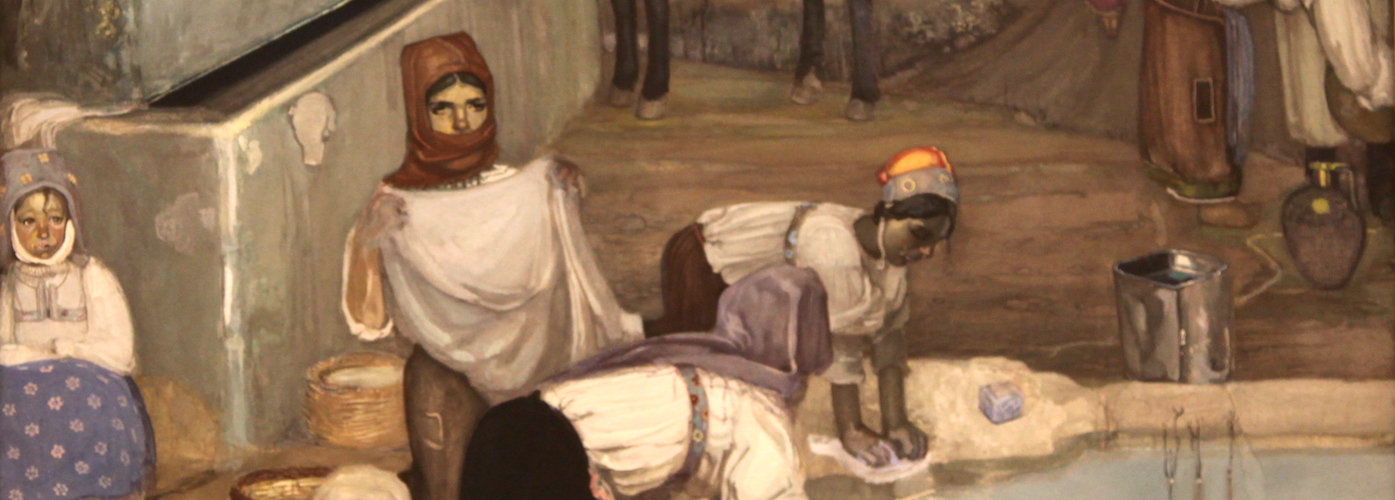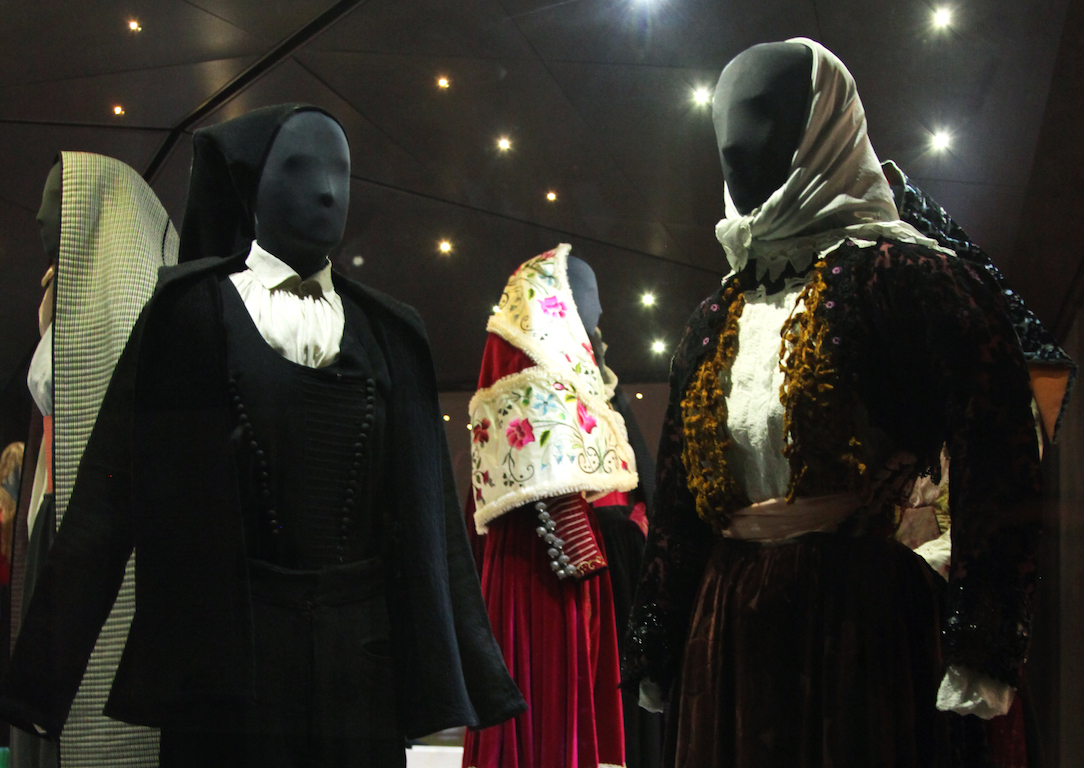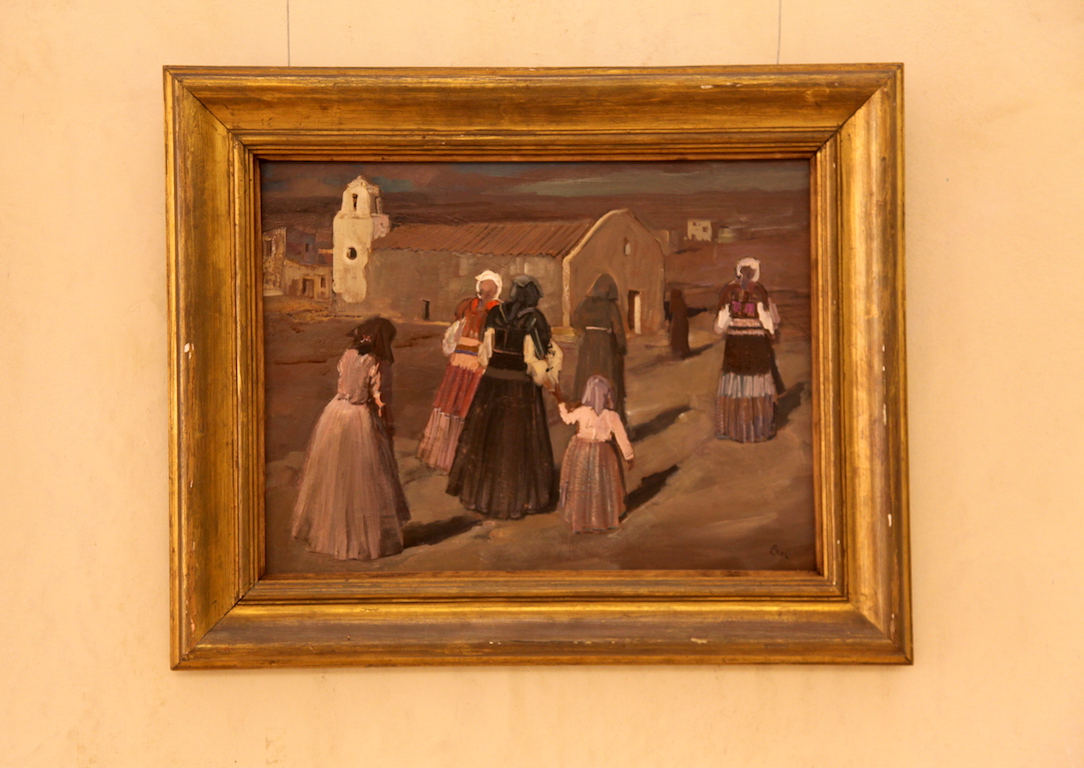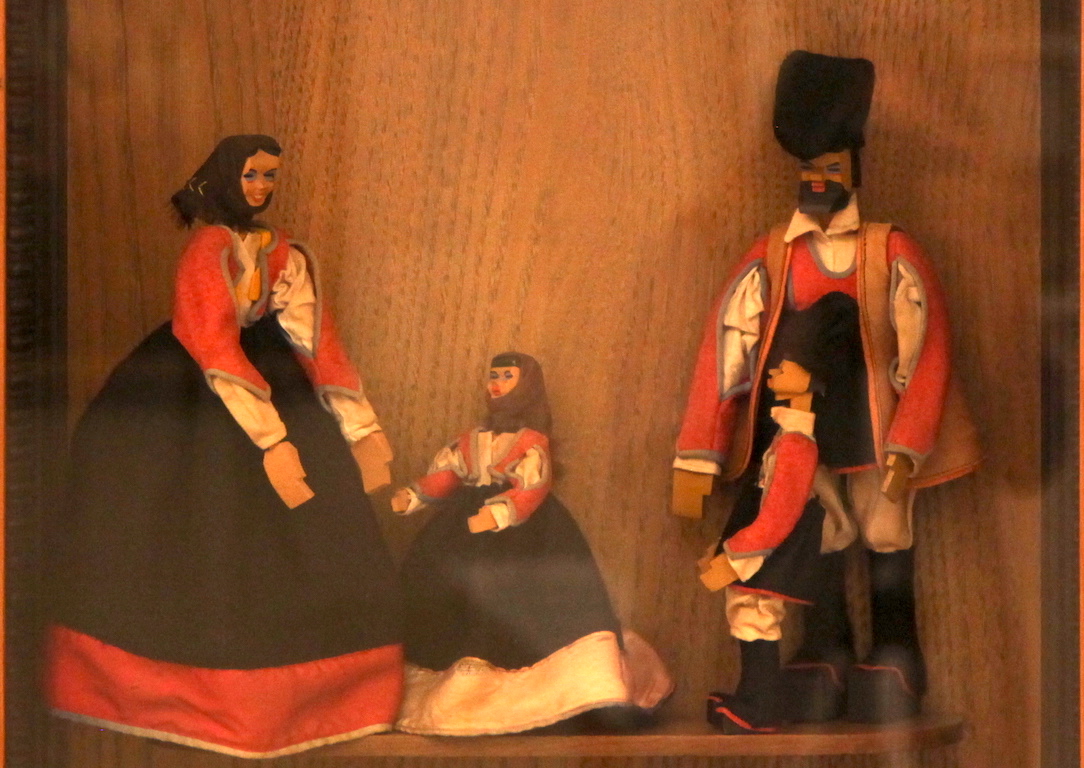From costumes to pictures
The museum

The Museum of Popular Life and Traditions in Nuoro and the National Archaeological and Ethnographic Museum with the name of G.A. Sanna in Sassari hold one of the most important expressions of Sardinian identity: traditional costumes.
Today traditional costumes are only put to use during celebrations, ceremonies and religious rites but they were once worn daily. Caps, shawls, corsets, gowns with different colours, materials and details identified trades, social status and place of origin of the people who wore them.

Sardinian traditional costumes
The weaving craft and its techniques represent one of the main features of Sardinian identity and since the beginning of the 20th c. connections between art and popular belief have given life to impressive artistic expressions.
Between 1927 and 1931 Federico Melis, aside from combining mass-production with craftsmanship, enriched Sardinian ceramic tradition and identity by channelling local usages and customs to his ceramics.

Giuseppe Biasi, Al vespro
During the same period, chromatic richness and rigorous lines of traditional costumes also inspired graphic designers and painters. For instance, Giuseppe Biasi’s paintings and graphic works represent sylvan scenes recalling fairy-tale and dream-like events with a simple and essential style. Portraits, small oils and huge murals by Filippo Figari represent local people, still life and landscapes which evoke the original ethnographic features of Sardinia: women are often portrayed in their traditional costumes, such as in the series devoted to Atzara, while in the Raccoglitrici di olive (Women picking olives) by Giovanni Ciusa Romagna, which portrays women working in a rural setting, the techniques and brush strokes recall the style of Macchiaioli.
Eugenio Tavolara, from Sassari, also represented traditional characters in wood sculptures enriched with fabrics. Furthermore, Tavolara gets credit for introducing the Sardinian craftsmanship in the modern house, as was the 1958 exhibition of the same name.

Eugenio Tavolara, Family from Nuoro
Today Tavolara’s cubist inspiration can be recognised in the mural paintings of Orgosolo, which is also known as the mural country because of its numerous artworks which create a sort of “scattered” tale and transform the village into an open-air museum.
Originally conceived as a form of protest and dissent against authorities and social injustice, the murals of many villages such as San Sperate, Villamar, Tinnura, and Serramanna have become a way to express local culture and identity in the same way of works realized with more traditional techniques such as painting on canvas and sculpture.
The portraits and characters of Pina Monne and Angelo Pilloni portray the past and the present of Sardinia, while the murals of Tellas and Crisa, representing natural elements and sea landscapes, are famous worldwide, thus paying the two artists a tribute which exceeds national borders.